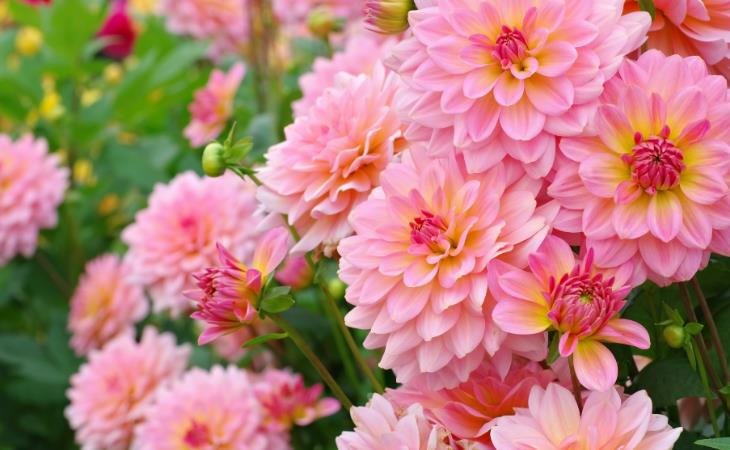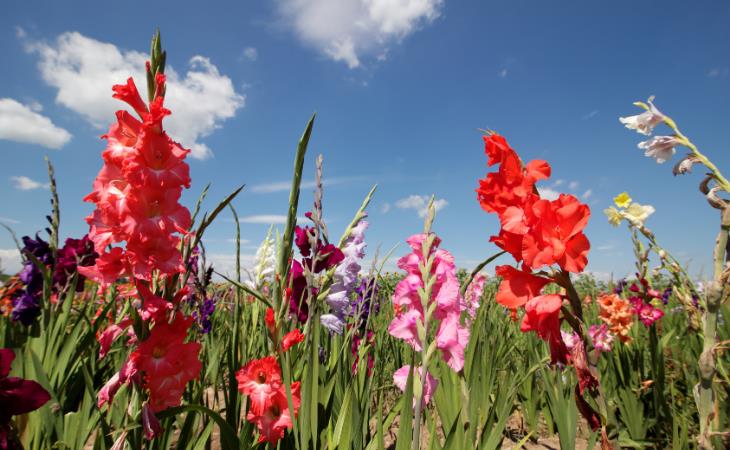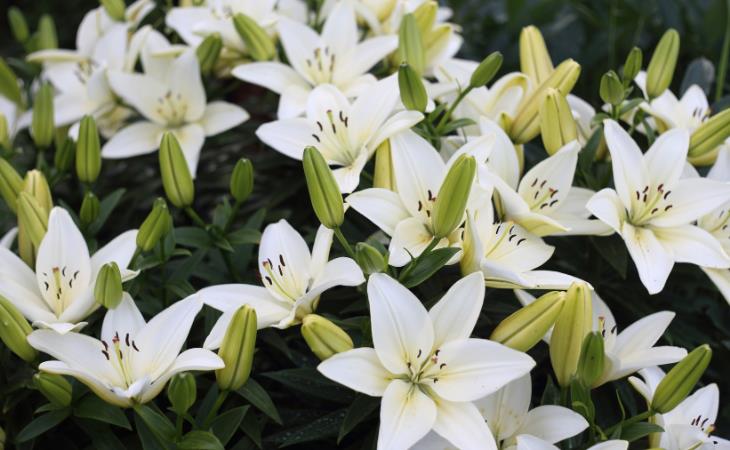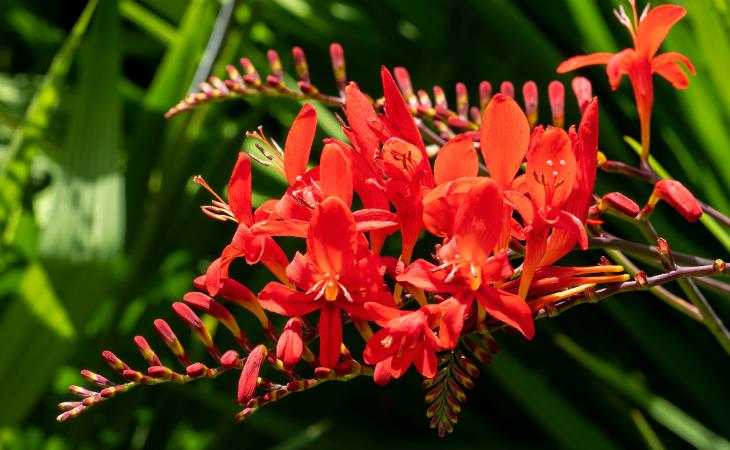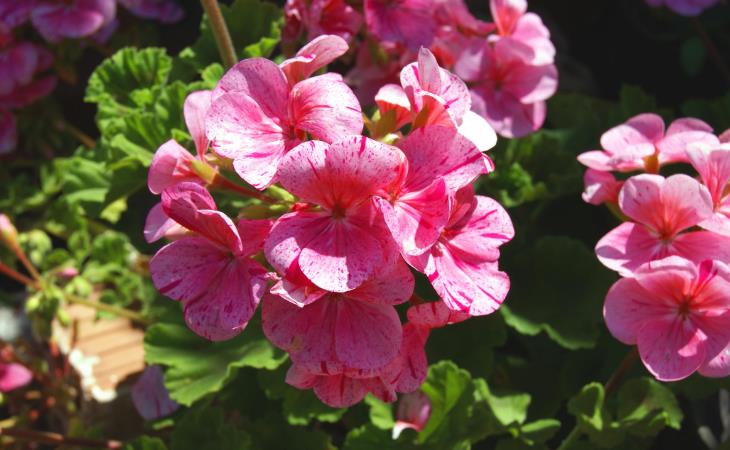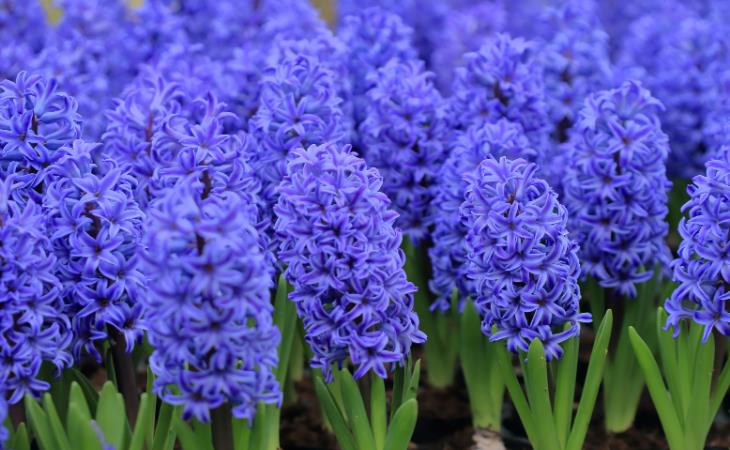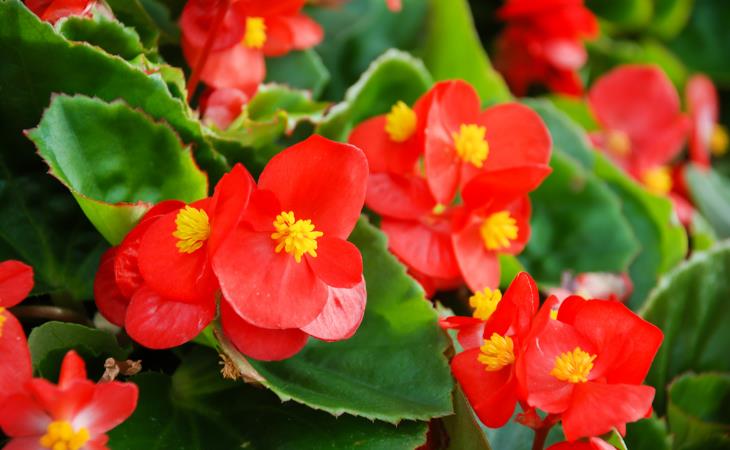Dahlias feature stunning, voluminous flowers in a wide range of hues, which make them an attractive addition to any garden. They enjoy warmth and sunlight and can be planted from spring to early summer. They can also be used in floral arrangements, but its advisable not to cut them while in the bud as they will not blossom after cutting.
How to Plant and Grow Dahlias
Plant after the last frost, in broad sun or mild shade. Place seeds at a depth of 4 to 6 inches and space them 18 to 24 inches apart in fertile, well-drained soil. Dahlias flourish in zones 8 through 11 as enduring perennials, while they serve as annuals in zones 3 to 8 (unless you opt to excavate and safeguard tubers indoors during winter).
2. Gladiolas
Gladioli have long stems with intricate, colorful flowers emitting a pleasing fragrance. Taller breeds require constant support, either through staking or companion planting with ornamental grasses. These flowers, sometimes referred to as sword lilies due to their leaf shape, are commonly known by their Latin plural, gladioli, or simply as "glads."
How to Plant and Grow Gladiolus
Choose a spot that receives plenty of sunlight but still provides some shade, and make sure the soil is rich in organic matter and drains properly. Plant corms every 10 to 14 days during the spring and early summer to ensure a continual display of flowers. Plant the corms about 4 inches deep and 6 inches apart. These plants thrive as perennials in Zones 7 to 10, and as annuals in Zones 3 to 7. You can also dig them up and store them indoors when winter approaches.
3. Lilies
A popular garden plant, lilies are robust bulbs with captivating blossoms that come in many solid colors or can be adorned with delicate flecks. During the summer months, you can orchestrate a symphony of colors by mixing Asiatic, double Asiatic, LA Hybrid, Trumpet, Oriental, and OT Hybrid lilies. Their resilience as perennials means they'll thrive in USDA zones four to nine, and provide enduring beauty year after year.
How to Plant and Grow Lilies
Plant in full sunlight to slight shade. Sow 4-6 inches deep in well-drained soil. Plant the seeds at a depth of 4 to 6 inches in well-drained soil. Suitable for Zones 3–9, many varieties show diverse growth patterns. Pair midsummer-blooming Asiatic lilies with late-summer-blooming Oriental lilies to extend the vibrancy of your garden's colors.
4. Chocolate Cosmos
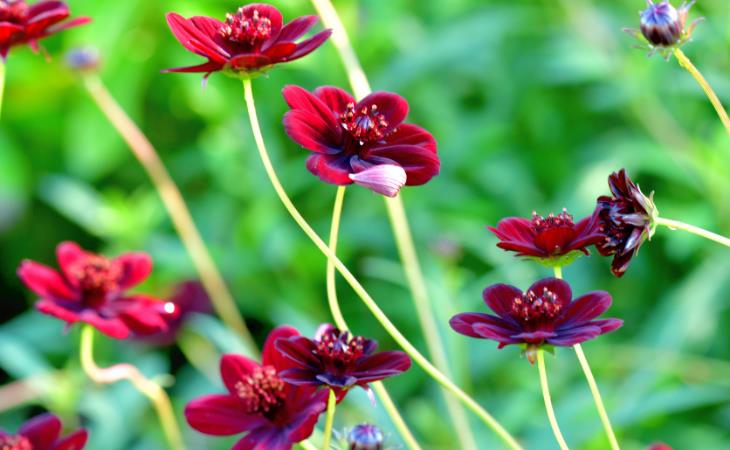
Unlike a true cosmos, which is typically grown from seed as an annual, this flower is grown from a small bulb. It produces velvety, burgundy-maroon blooms that resemble a single cosmos flower on a tall, dark stem. As an added bonus, these flowers have an irresistible cocoa-like fragrance.
How to Plant and Grow Chocolate Cosmos
Select a sunny spot with well-drained soil. Plant bulbs in early spring, 6-8 inches apart and 2-3 inches deep. Water regularly but not excessively to avoid bulb rot, and enjoy the velvety burgundy-maroon blossoms with a wonderful cocoa aroma all summer.
5. Crocosmia
Crocosmia peaks in late summer with its slender, erect leaves covered in vibrant shades of red, orange, and yellow. When planted alongside annuals in similar colors, they add a vibrant splash of color to container displays. These flowers are known for their excellent cut flower qualities, as well as their tendency to establish themselves quickly. Choose them not just to attract hummingbirds and butterflies, but also for their exceptional resistance to deer and rabbits.
How to Plant and Grow Crocosmia
Crocosmia loves moist, organically nourished, well-drained soils, and can grow in full sun or mild shade. While it covers Zones 5 through 9, those in Zone 5 should have extra winter protection and a protected location to promote strong development.
6. Cranesbills
Cranesbill geraniums, known for their delicate charm and vibrant colors, cluster densely and serve as excellent space fillers. They are extremely drought-tolerant and make excellent ground cover or borders. Experts say they thrive whether planted in the spring or fall, in full sun or partial shade, as long as the soil is well-drained. These adaptable geraniums do well in a variety of climates; however, putting organic matter into the soil before planting promotes their robust development.
How to Plant and Grow Cranesbills
Although geraniums are not classed as real bulbous plants, they have bare roots that function similarly to bulbs. Maintain a proper spacing of 12 to 18 inches between plants. Ideal for cultivation in Zones 4-8.
7. Hyacinth
These delightful and sturdy bulbs come in various shades of blue, white, and pink, making them an excellent choice for any garden. Not only do they provide a burst of color, but they also make a reliable return performance for many years, typically blooming in mid- to late spring. Planting these bulbs is an investment that pays off in the long run. Also, their strong fragrance creates a pleasant and inviting atmosphere, making them a popular choice for gardeners who want to create a relaxing and peaceful environment.
How to Plant and Grow Hyacinth
To plant and grow hyacinth, choose a well-draining location with partial to full sunlight. Plant bulbs in the fall, placing them about 4-6 inches deep and 6-8 inches apart, with the pointed end facing upward. Water thoroughly after planting and maintain consistent moisture throughout the growing season for vibrant blooms in spring.
8. Begonias
Begonias thrive in shaded settings unlike many bulbous plants, bringing life to overlooked corners and dreary gardens. Their ability to continuously bloom from spring through fall adds an extended burst of color to garden landscapes. With a diverse range of varieties available, begonias offer versatility and beauty for springtime displays.
How to Plant and Grow Begonias
Place them strategically in shaded spots, in pots, or right in the garden bed. Plant tubers with the concave side facing upward, bury them at a depth of about one inch, and keep soil moisture at an appropriate level to avoid oversaturation. Begonias thrive best in Zones 9-11. In cooler climates, they can be grown as seasonal plants or kept indoors throughout the winter. As spring brings warmth, they bloom again, ready to fascinate once more.

